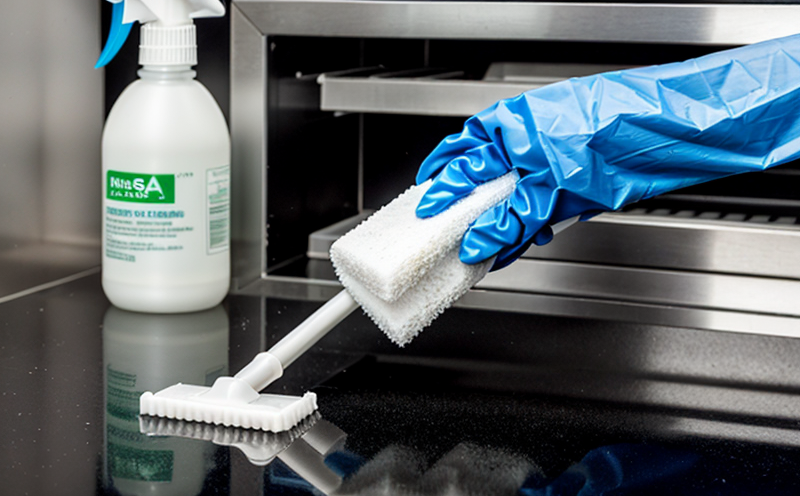EN 16615 Microbiological Efficacy Testing of Plastic Cleaning Products
The European Standard EN 16615:2012 specifies microbiological efficacy testing protocols for plastic cleaning products designed to kill or inactivate microorganisms on surfaces. This standard is crucial for ensuring that the plastics used in cleaning applications meet hygiene and sanitation standards, particularly important in sectors like food processing, healthcare, and hospitality.
The testing process involves exposing the plastic specimen to various pathogens such as Escherichia coli, Pseudomonas aeruginosa, and Candida albicans. After exposure, the plastic is rinsed with water, and any residual microorganisms are quantified using standardized culture methods. The goal is to demonstrate that the plastic material not only allows effective cleaning but also remains non-toxic and safe for end-users.
Testing for microbiological efficacy on plastics used in cleaning products requires precise specimen preparation. Typically, this involves cutting the plastic into small squares or strips of a specified size, then sterilizing them before exposure to pathogens. Post-exposure, these specimens are rinsed with water that has been filtered and deionized.
The equipment used for microbiological testing includes incubators, autoclaves, spectrophotometers, and laminar flow cabinets. The use of these instruments ensures consistent and accurate results, which is critical given the regulatory requirements associated with cleaning products.
Acceptance criteria for EN 16615 are stringent and vary depending on the type of plastic used and its intended application. For instance, a product intended to be used in food contact surfaces must achieve at least a 99% reduction of pathogens post-treatment. This high standard ensures that the cleaning products not only meet hygiene requirements but also do so without compromising the integrity or safety of the plastic.
It's important to note that the testing process is not just about killing microorganisms; it involves evaluating the durability and effectiveness of the plastic under real-world conditions. The results are reported in a detailed technical report, which includes data on pathogen reduction rates, residual microbial counts, and any potential release of harmful substances.
The testing procedure can be complex due to the variety of plastics used in cleaning products, each with its unique properties. Polyethylene (PE), polypropylene (PP), polystyrene (PS), and polyvinyl chloride (PVC) are common materials tested under EN 16615. Understanding these differences is crucial for accurate testing.
In conclusion, the microbiological efficacy testing of plastic cleaning products under EN 16615 ensures that the plastics used in hygiene and sanitation applications are both effective and safe. This standard plays a vital role in maintaining public health by ensuring that cleaning products do not only clean effectively but also remain hygienic throughout their lifecycle.
Benefits
- Ensures compliance with international hygiene standards
- Maintains the integrity and safety of plastic materials used in cleaning applications
- Enhances customer trust by demonstrating effective microbial reduction
- Aids in meeting regulatory requirements for food contact surfaces
- Improves product durability under real-world conditions
- Facilitates accurate reporting to stakeholders
Industry Applications
| Industry | Specific Cleaning Products Tested | Target Pathogens |
|---|---|---|
| Food Processing | Plastic containers, packaging materials | E. coli, P. aeruginosa |
| Healthcare | Instruments, surfaces, and equipment | C. albicans, S. aureus |
| Hospitality | Plastic utensils, food service ware | L. monocytogenes |
The testing under EN 16615 is essential for ensuring that plastic cleaning products are effective in reducing microbial loads across various industries.
Customer Impact and Satisfaction
By ensuring the microbiological efficacy of plastic cleaning products, this testing enhances customer satisfaction. Consumers trust brands that provide safe and hygienic products. Meeting EN 16615 standards assures customers that the products they use are effective in killing pathogens without compromising on safety or durability.
Moreover, compliance with such standards can lead to increased market share as businesses can differentiate themselves by offering cleaner and safer alternatives. This can also reduce liability risks for manufacturers and distributors involved in sectors where hygiene is paramount.





